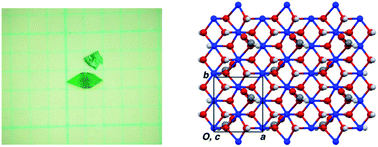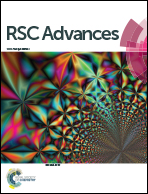Crystal structures, and magnetic and thermal properties of basic copper formates with two-dimensional triangular-lattice magnetic networks†
Abstract
Basic copper formate, [Cu3(OH)4(HCOO)2], was selectively prepared by hydrolysis of formate ions in concentrated aqueous solutions of copper formate. This material exhibits a two-dimensional distorted triangular-lattice magnetic network of Cu(II) ions where S = 1/2. The dominance of antiferromagnetic interactions with J/kB = 35.7(2) K and a magnetic anomaly at approximately 2.3 K that corresponds to a paramagnetic-to-antiferromagnetic ordering transition were revealed by magnetic measurements. The field dependence of the magnetisation at 2 K corresponds to the 1/3-magnetisation plateau that is commonly observed in a two-dimensional triangular-lattice system. Moreover, heat-capacity measurements found a λ-type anomaly at 2.15 K, which is the magnetic transition temperature. This material may be a good candidate for a geometrical frustration system with novel magnetic phenomena such as spin-liquid states.



 Please wait while we load your content...
Please wait while we load your content...